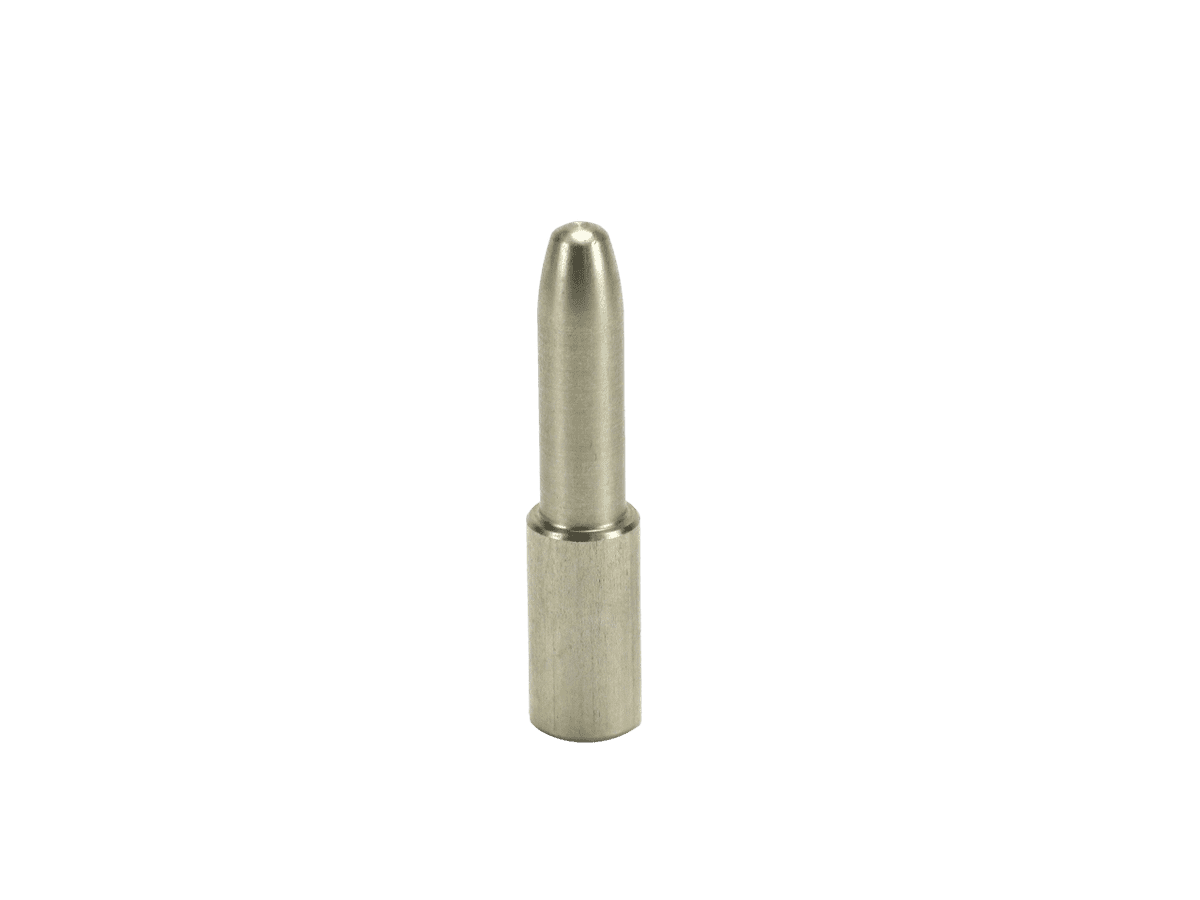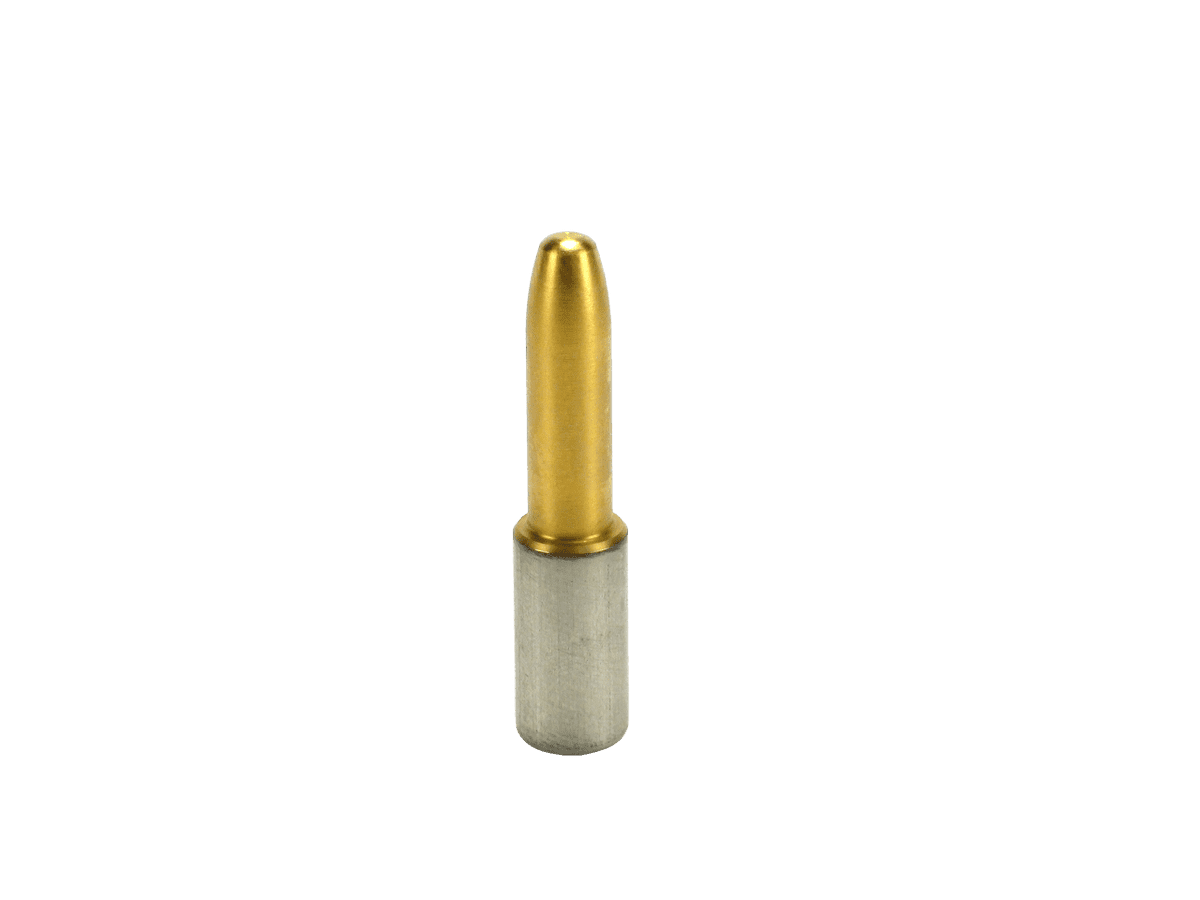BerndV
Member
The new carbide mandrels from 21st century are sized 0.0008 smaller than bullet diameter. Does anyone know why they went with this size instead of the standard 0.002 under? I asked them via email but never received a response.
 Help Support Long Range Hunting Forum
Help Support Long Range Hunting Forum

You beat me to it; I prefer it because you have more options. For instance, for the OP's query for .264 cal, you only have one option vs. the caliber specific you get .2635", .262", .2615", and .2610."
Caliber Specific Expander Mandrel Kits
Our caliber specific expander mandrels are available in .0005” increments in calibers 22 to 338 and will range from .001” above bullet diameter to at least .003” below bullet diameter depending on caliber. This will allow the reloader to find proper neck tension to fine-tune their loads. The...21stcenturyinnovation.com
This specific mandrel is for the neck turning kit; the expander mandrel is larger than the -0.002" turning arbor so that the case neck is expanded large enough to to ride on the turning arbor while being cut. It is not a sizing mandrel used to set case necks.Expander mandrel.
Could someone simply explain the difference in turning or sizing mandrel as I have never used them at all and I bought some mandrels but I need something else to make them work. LE Wilson is just 10 miles away in Cashmere, WA and I think he has the body or whatever you call it with a slot in it I guess to see what's happening and I need that to get to use the mandrels. Is that right or not? I understand that runout is much less doing this step, but I don't know. I just hunt and target shoot up to 400 yds and have reloaded since 69 but never did these steps nor do I have a chronograph. Any information would be appreciated.Is it a turning or sizing mandrel?
No, it is their new carbide expander mandrel. It states that it is an expander mandrel. See the screenshot in post #3:This specific mandrel is for the neck turning kit; the expander mandrel is larger than the -0.002" turning arbor so that the case neck is expanded large enough to to ride on the turning arbor while being cut. It is not a sizing mandrel used to set case necks.
An expander mandrel is used to set inside neck diameter on either new or resized brass. It can be done prior to bullet seating or prior to inserting a turning mandrel that is used in conjunction with a neck turning lathe.Could someone simply explain the difference in turning or sizing mandrel as I have never used them at all and I bought some mandrels but I need something else to make them work. LE Wilson is just 10 miles away in Cashmere, WA and I think he has the body or whatever you call it with a slot in it I guess to see what's happening and I need that to get to use the mandrels. Is that right or not? I understand that runout is much less doing this step, but I don't know. I just hunt and target shoot up to 400 yds and have reloaded since 69 but never did these steps nor do I have a chronograph. Any information would be appreciated.
Try re-reading, I'll clarify :No, it is their new carbide expander mandrel. It states that it is an expander mandrel. See the screenshot in post #3:
This specific black nitride (NOT carbide) expander mandrel is for the neck turning kit; the -0.0008" black nitride (NOT carbide) expander mandrel is larger than the -0.002" turning arbor so that the case neck is expanded large enough to to ride on the turning arbor while being cut. It is not a sizing mandrel used to set case necks to a tuned ID like their more comprehensive expanding mandrel caliber kits that range from approx. -0.003" to +0.002" around a given caliber.


21st Century Shooting Expander Mandrels when used with our 21st Century Shooting Expander Die Body will expand the case neck for proper fit on the turning arbor. Precision CNC machined from very high grade stainless steel.
These are sized .0008" (+/- .0002") below bullet diameter.

"Expander" or "sizing" mandrels generally mean the mandrel expands the case neck to a particular size, usually for use as part of a neck turning kit - they expand case necks to a certain size to ride correctly on the arbor as the case neck is cut. The majority of manufacturers that make mandrels fall into this "for neck turning" category, at least until recently when we've seen a growth in offerings for pre-bullet seating neck expansion.Could someone simply explain the difference in turning or sizing mandrel as
You need a die body that works with the mandrels you have. Most mandrels with non-threaded heads fit into a Sinclair sized die like this one:I have never used them at all and I bought some mandrels but I need something else to make them work.

LE Wilson makes "new brass" mandrels that are sized to where they should result in a neck that is 0.0015" smaller than caliber when run through new, unfired brass. This tool is designed to iron out the dings that case necks inevitably get if they aren't shipped in ammo boxes. LE Wilson mandrels are not compatible with Sinclair pattern dies - they tread into a stem which is then treaded into the die body. To use a Wilson mandrel, you need a Wilson die, and vice versa. If you don't have Wilson mandrels, their die won't work for you.LE Wilson is just 10 miles away in Cashmere, WA and I think he has the body or whatever you call it with a slot in it I guess to see what's happening and I need that to get to use the mandrels. Is that right or not?
Using mandrels won't automatically reduce runout, but generally using a mandrel to size the ID of the case neck you won't add as much as you otherwise might, especially if you're currently using a button in your sizing die and pulling up through the case neck.I understand that runout is much less doing this step, but I don't know.
IMO there's no need for you to use mandrels, at the range you said you'll most likely never see a difference unless you're really deep into Benchrest/ F-Class type shooting and are consistently under half-MOA groups already. Not a rabbit hole worth going down unless you're trying to chase smaller groups than you can currently get, and you've already taken care of some other things along the way.I just hunt and target shoot up to 400 yds and have reloaded since 69 but never did these steps nor do I have a chronograph. Any information would be appreciated.